On October 8, 2025, Israel and Hamas agreed to a U.S. ceasefire proposal regarding the war in the Gaza Strip. Below, Brookings scholars reflect on the agreement and what it means for the broader Middle Eastern region.
The harder work now begins
After two years of excruciating violence, including 1,200 Israelis and foreigners killed on October 7, 2023, followed by more than 67,000 Palestinians killed since—the equivalent of another Oct. 7 every two weeks—thankfully, the daily bloodshed has paused. Israelis have seen dozens of their citizens held captive in Gaza returned, and Palestinians are seeing captives and the bodies held by Israel released—but only a small fraction of them, as thousands remain held without trial and hundreds of bodies have been held for years—long before Oct. 7. Even so, stopping the daily killing is only the beginning. The harder work now begins: Can a ceasefire hold? Can a just peace emerge?
While President Donald Trump traveled to Israel to speak to its parliament and public, he hasn’t done the same with the Palestinian people. Though his son-in-law Jared Kushner and his envoy Steve Witkoff met and shook hands with Hamas negotiators to seal the deal, those being asked to accept a political future must have a voice in shaping it.
Whether Palestinians can achieve a basic level of freedom will shape whether hope replaces despair in Palestine. Gaza was impoverished long before 2023, not by fate but by the absence of freedom of movement imposed on it, mostly by Israel but with Egypt going along for the ride. If the Palestinian people can achieve the basic freedom to travel, manage their own economy, and build institutions and more efficient governance, they can thrive. Further, Gaza’s physical destruction is enormous and will require billions in aid to restore a modicum of humanity.
Arab and Muslim-majority governments have signaled clearly—after Israeli Prime Minister Benjamin Netanyahu’s brazen, deadly attack in Qatar—that the region will no longer accept endless war. Europe’s recognition of Palestine reflected not symbolism but impatience with a half-century of diplomatic paralysis. And in the United States, public opinion—including among American Jews—has shifted toward demanding Palestinian rights and accountability.
But seeking peace without equality is an illusion. Israelis today enjoy security, freedom, and one of the world’s strongest economies—wealthier per capita than France, Japan, the UAE, or the U.K. Palestinians live under military control and are 20 times poorer. That immense imbalance in a tiny territory the size of New Jersey is a recipe for recurring conflict.
Half a century of the world (and the United States) asking nicely to resolve the Israeli-Palestinian conflict has been an utter failure. I know—I’ve seen it firsthand. We now need a sustained global push for equal measures of freedom, security, prosperity, and rights for both peoples. I’d call it a global commitment to “action until equality.” Trump, empowered by his own determination, deferred to for his willingness to use American power, and motivated by legacy, has immense influence over the parties, including Netanyahu, due to his popularity with the Israeli public. The road ahead is treacherous, but if Trump acts with determination, there’s actually a chance he can move the situation toward the lasting peace he says he wants to achieve.
The Gaza peace plan resurrects the two-state solution
Among other remarkable effects, the Gaza peace plan resurrects the two-state solution as a pillar of bipartisan U.S. policy toward the Israeli-Palestinian conflict.
Gaza and the West Bank are generally understood to be occupied territory under international law, meaning Israel is not supposed to permanently annex them. Instead, negotiations have long worked toward a process through which these territories can eventually be returned to Palestinian control as part of a future Palestinian state.
For years, this two-state solution was a focus of bipartisan U.S. foreign policy. But the first Trump administration took several steps that seemed to undermine it. And so has Israel, including by expanding West Bank settlements and openly debating annexation, with the apparent acquiescence of the second Trump administration. Netanyahu recently went so far as to openly declare that “there will be no Palestinian state” just days after a visit by Secretary of State Marco Rubio.
But the Trump administration’s peace plan embraces a different tack, as it calls on Israel to disavow any intent to annex Gaza, guarantees Gazans a right to return, and provides for Gaza to ultimately be governed alongside the West Bank by a reformed Palestinian Authority. Combined with measures to address Israeli security concerns and U.S. assurances that it will oppose any West Bank annexation, these conditions openly aim toward, in the plan’s words, “a credible pathway to Palestinian self-determination and statehood.”
How effectively the White House will follow through remains to be seen. But at a minimum, its approach reflects a remarkable turnaround—one that Trump seems willing to put his political capital behind.
How to turn dealmaking into peacemaking
That the nightmare which began on October 7 and continued through a horrific war in Gaza may have finally ended is worth celebrating. For many of us who have worked on the Middle East and have never grown accustomed to living with its endless cycles of human suffering, this is a huge relief. An imperfect peace is better than a harrowing war.
The Gaza deal remains fragile and leaves many questions unanswered, as nearly every commentator has noted. What kind of peacekeeping force will ensure security and stability? What guarantees the transition from Phase 1 to Phase 2 once the Israeli hostages are released? Or what is the endgame that can deliver some measure of Palestinian sovereignty while compelling Hamas to surrender power? And so on.
But the more compelling question is what Trump’s upside-down peacemaking—where victory is declared before the details are worked out—tells us about a new era in U.S. foreign policy, and what it means for our own work. As the foreign policy community, we have prided ourselves on our ability to provide expertise, strategic depth, and long-term vision to complex problems. We valued sequenced roadmaps, expert-led negotiations, and the painstaking architecture that underpins durable peace agreements.
What if that no longer matters in the same way? The last few months have shown that a transactional, personalized, and perpetually televised approach to diplomacy—as unserious as it may seem—can yield real results. Results that had eluded all of the experts and previous administrations with their detailed roadmaps and attention to nuance. The Gaza ceasefire is proof of that.
This raises interesting dilemmas about our work, rather than making it irrelevant. It is one thing to make a deal; another to turn that deal into a stable and sustainable order. Gaza, and all the uncertainties around the day-after, is a case in point. Details and expertise will matter enormously in post-conflict stabilization and governance in Gaza, as it does in Syria, the West Bank, Armenia, Azerbaijan, Ukraine, and the other flashpoints Trump has touched. This work is decidedly less sexy than dealmaking, but perhaps equally important.
As the U.S. relationship with the rest of the world evolves, for better or worse, this new era of improvisational diplomacy challenges us to adapt—and creates new spaces where strategic analysis and institutional expertise can help shape what comes after the deal.
If Trump’s diplomacy is about making deals, ours in the foreign policy community must be about making them endure.
Gaza’s reconstruction will be an enduring challenge
The first stage of Trump’s 20-point plan to achieve a ceasefire in Gaza and release the hostages is underway. As many have noted, ensuring the continuation of the ceasefire and putting into place the transitional technocratic governing system that the plan envisages will be challenging. What promises to be as, if not more, challenging will be the physical reconstruction of the Gaza Strip. Some of the most striking images coming out of the two-year war are those of the sheer devastation. In April, the U.N. estimated that the removal of the rubble caused by the war could “take up to 20 years,” and that disposal would require 6,327 donums (roughly 2.4 square miles) in an already overcrowded, narrow strip of land. Buried in this debris are not just lives and livelihoods but also a rich cultural and social history stretching back for many centuries.
Trump’s plan is silent on reconstruction. It makes only vague references to an “economic development plan to rebuild and energize Gaza” and the creation of a “special economic zone” benefiting from trade preferences. It is difficult to see how economic development can be achieved without first addressing the removal of the rubble and reconstruction of Gaza’s whole infrastructure: homes, schools, hospitals, roads, ports, etc. Such reconstruction would also entail an important social dimension by helping Gazans to gradually recover from their trauma and become active participants in their economic development as well as stakeholders in peacebuilding.
A 'new Middle East' remains elusive
Trump’s adulatory reception in Israel today for his role in negotiating a ceasefire in Gaza and the return of all living Israeli hostages was—for once—well-deserved. After two bloody and horrific years for Israelis and Palestinians, Trump’s unconventional diplomacy succeeded in halting the violence and creating an opening for a better future for both peoples.
This conflict has no shortage of prospective spoilers, and the joy that many are experiencing today is tempered by the atrocities that precipitated the war, the devastation and grievous suffering in Gaza, and the monumental task ahead of securing an enduring peace and pathways to Palestinian reconstruction and sovereignty.
Still, Trump prevailed where the most concerted and well-intentioned efforts of his predecessors in the Biden administration failed. The hallmark of his approach was his willingness to play hardball with both parties, a willingness to put American credibility on the line, and a persistent focus on avoiding overreach. Where President Joe Biden sought to persuade, Trump issued demands and imposed constraints. He joined the Israeli attack on Iran in June and enabled its success, but also insisted on an abrupt end to the mission. He lauded Netanyahu and later bulldozed him into a humiliating on-camera apology to Qatar’s prime minister after a failed Israeli strike on Hamas political leaders in Doha. His negotiators engaged directly with Hamas, at times without explicit coordination with Israel, and named Trump himself as the head of the board that is intended to oversee the deal’s implementation, signaling Washington’s commitment to ensuring that its Israeli allies adhere to the deal’s terms.
After Israeli success in decapitating both Hamas and Hezbollah in neighboring Lebanon and eradicating much of their arsenals, the war had become a political and strategic liability for the Jewish state—and in Washington. Still, its perpetuation had begun to seem inexorable, in part because of the coalition dynamics within Netanyahu’s government and American reluctance to dictate the terms for its closest ally in the region. Trump and his team of real estate wheeler-dealers broke that stalemate with creative and energetic diplomacy.
For the plan to succeed, Washington will have to invest even more energy and political capital in advancing the next phases of the plan. And even as he indulges in his trademark braggadocio, the president will have to take care to avoid overreach. Before the Knesset, he promised that the region was experiencing the “historic dawn of a new Middle East”—language that is all too reminiscent of the Bush administration’s rosy projections even after the disastrous fallout from its 2003 invasion of Iraq.
Israel’s moment of choice
In the aftermath of the Sharm El-Sheikh agreement, Israel faces three main challenges. The first is doing its utmost to make it work. This depends on several other actors, but Israel itself will have to come to terms with the fact that the agreement concludes the two-year war without a complete victory. Jerusalem will have to work with regional and international partners to build a functioning, stable authority in Gaza and to proceed with remedying the damages of the war. The fact that the two extremist right-wing parties chose to stay in Netanyahu’s coalition implies that the prime minister will have to contend with domestic pressure to pursue a militant line.
High on the Israeli government’s agenda is the need to undo the massive damage to Israel’s legitimacy and international standing. This will not be accomplished by merely ending the war. In the short term, Gaza’s opening to the international media will probably generate fresh criticism of Israel, and it will take a sustained and creative effort to bring about a fundamental change in the world’s perception of Israel and Israelis.
This issue will also be shaped by the unfolding conflict over Israel’s identity and orientation: will Israel be governed by the same right-wing coalition that has been in power since 2022, or will it be replaced by a centrist coalition? The next parliamentary elections are scheduled for the end of 2026, but they may well take place earlier. The Gaza war and its conclusion are going to play a major role in these elections. Netanyahu will seek to portray the war’s end as a major achievement and to gloss over the catastrophe of October 7. The opposition will seek to depict Netanyahu as the principal culprit in the Oct. 7 debacle. In this context, Trump’s quest to expand the Abraham Accords is of particular importance. If Netanyahu can run in the next election as the leader who brought normalization with Saudi Arabia, his prospects of being reelected will be dramatically enhanced.
An international stabilization force?
While celebrating the end of this terrible war, the international community—particularly the countries gathered in Sharm El-Sheikh—must get to work. The most important, though seemingly unresolved, component of Trump’s 20-point plan involves the mandate and command structure of a new international stabilization force (ISF). According to point 15 of the plan, the ISF will immediately deploy to Gaza in order to train and provide support for newly vetted Palestinian police forces, in consultation with Egypt and Jordan. It is yet unclear which country will lead the ISF, and which countries are willing to send their forces into post-conflict Gaza, where Hamas is actively trying to reinstate itself and rebuild its monopoly over the use of force.
Yet the success of the other 20 points, whether Hamas’ de-militarization, the provision of significant humanitarian aid, a new technocratic Palestinian governance structure, and the free flow of goods into Gaza, hinges on a rapid alternative to Hamas’ security control. The Trump administration should use the Egypt conference to demand that countries contribute forces, logistical support, and resources immediately. Lessons from other international stabilization forces, both within the Middle East and beyond, suggest that domestic politics and regional tensions can complicate—and delay—the establishment of these forces. Any delay in establishing this force will make it harder to wrest control from Hamas in the weeks and months ahead.
Can President Trump bend Gaza’s reality to his will?
Ever since Trump announced that Israel and Hamas had agreed to a plan to release the Israeli hostages and end the carnage in Gaza, he has seemed determined to bend reality in Israel-Palestine to his will. Trump has insisted publicly that the war is now over, even as Israel’s prime minister continues to suggest otherwise and Hamas continues to reject unilateral disarmament, seeing the issue as an internal Palestinian matter to be considered later. Going further than Gaza, Trump promised a “historic dawn of a new Middle East” in his speech to Israel’s Knesset and headed to Egypt for a grander celebration of what he projected as an unprecedented achievement.
To be sure, these accomplishments, including releasing the Israeli hostages and Palestinian prisoners, most held without charges, are welcome and important. The end of what half of Americans saw as constituting genocide in Gaza and the increased flow of aid to the strip deserve applause. But is this agreement more than a hostage release deal with a temporary ceasefire?
Clearly, neither Hamas nor Israel sees the deal as conflict-ending, and they have yet to agree to the terms of Trump’s 20-point plan beyond the first phase. This is a deal reluctantly agreed to by still-irreconcilable foes. Certainly, there is little evidence that the Israeli far-right has given up on its expansionist aspirations. Israel’s military is still in control of 58% of Gaza, not to mention the West Bank. Back in March, Israel violated the ceasefire agreement it had helped author when its aims shifted, on Trump’s clock.
Now that the hostages have been thankfully released, removing a central domestic grievance against Netanyahu, will his incentives shift as Trump’s attention moves to other pressing issues? It may be too much to rely on Trump’s ability to bend reality to his will to get beyond this point, but that seems to be the principal source of hope for those seeking a lasting peace.
The Brookings Institution is committed to quality, independence, and impact.
We are supported by a diverse array of funders. In line with our values and policies, each Brookings publication represents the sole views of its author(s).

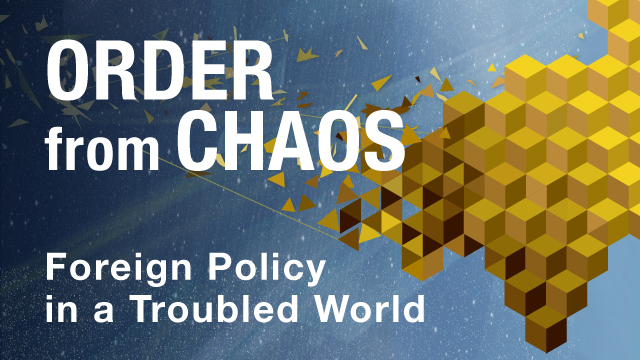








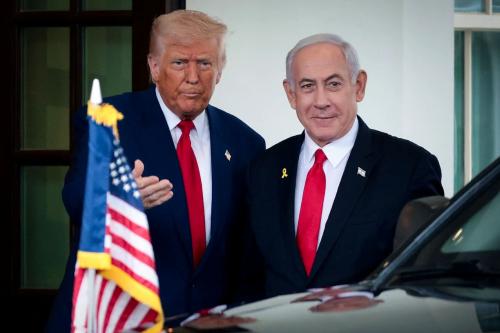

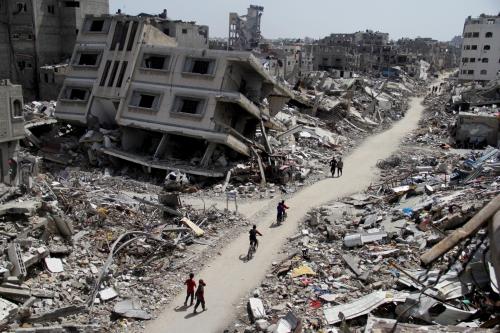
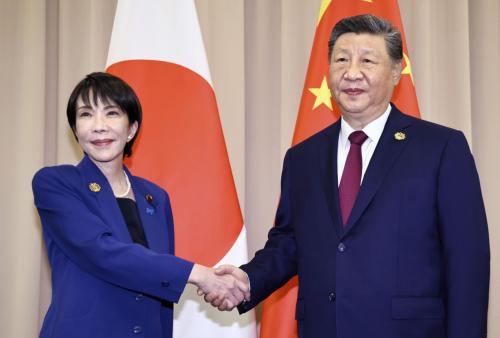

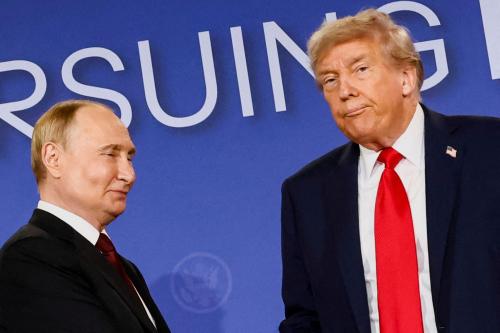
Commentary
What could the Israel-Gaza deal mean for the Middle East?
Brookings experts weigh in
October 13, 2025